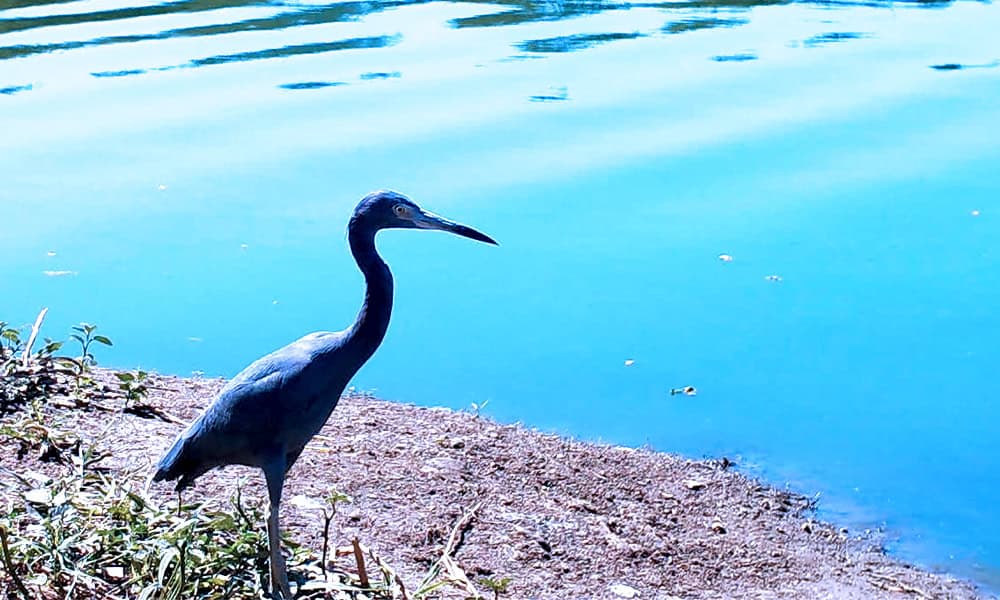Today we meet the little blue heron. It’s a heron that’s little and blue. Most of the time. The little blue heron (Egretta caerulea) is known as the garceta azul in Spanish, which translates right back to little blue heron. The little blue heron is indeed little and blue for the majority of its life but because that would make it too easy to identify, it comes in a couple of other colors while it’s young.
Very young little blue herons are pure white making them appear extremely similar to the snowy egret. The bill is a good way to figure out which of the two you’re looking at.
The snowy egret has a thin dark bill, and the juvenile little blue heron’s bill is thicker and two-toned with a dark tip. The halfway between juvenile and adult little blue heron looks like somebody took the adult and juvenile plumage and swirled them together. The result is an interesting piebald plumage of seemingly random blotches of blue and white.
As if having three very different appearing plumages wasn’t confusing enough, the little blue heron complicates things further with its ability to hybridize with other species. They are able to hybridize with cattle egrets, snowy egrets, tricolored herons, and black-crowned night herons. I highly recommend typing ‘little blue heron hybrids’ into your favorite search engine and taking a gander at a bunch of herons that don’t look quite right.
Little blue herons are seasonal migrants to Costa Rica, but much like their color patterns, they’re migratory patterns are a bit all over the place. For the most part, they arrive in Costa Rica in September and hang out until around April. They return north to the United States in April to breed.
Apparently, the majority of the birds that migrate to Central America live west of the Mississippi River in the States. Not all Tico little blue herons fly back in April. Some individuals, mostly yearlings, will continue their vacation for the whole year. Even more rare are the individuals that breed in Costa Rica. Every so often they’re found nesting on Isla Pájaros in the Gulf of Nicoya.
Little blue herons live in very heron-like places and enjoy a very heron-esque diet. They’re found in a variety of freshwater and marine environments including mangroves, estuaries, swamps, tidal flats, salt marshes, streams, and flooded fields. Their diet consists of a variety of small fish, crustaceans, amphibians, and insects. They’re patient hunters, either staying still and waiting for their food to come to them or walking very slowly through the shallows looking for the right opportunity to strike.
I see little blue herons frequently in the field, especially along the edges of ponds or canals in sugarcane plantations because they prefer to hunt in standing water. When working in the proper environments, I record little blue herons regularly. I especially enjoy videos featuring the piebald half-juvenile, half-adults, simply because I enjoy the randomness of the color pattern. I’ll include clips of the whole range of plumages in the video below.
About the Author
Vincent Losasso, founder of Guanacaste Wildlife Monitoring, is a biologist who works with camera traps throughout Costa Rica. Learn more about his projects on facebook or instagram. You can also email him at: vincent@guanacastewildlifemonitoring.com






